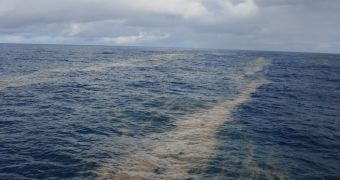Scientists have known for a long time that a cyanobacteria known as Trichodesmium was the microbe that reigned supreme over the vast amounts of nitrogen that the world's oceans include. This small member of the large group was for many years thought to be the sole ruler of the oceanic nitrogen concentrations, but recently marine biologists have discovered that it actually shares its position with two other types of cyanobacteria, called UCYN-A and Crocosphaera watsonii. These small, spherical organisms work together in regulating the way nitrogen flows through the oceans, and also determine how the chemical is stored, which makes them extremely important to science.
The three microbes are extremely abundant in the water, a new study published in the latest online issue of the respected journal Science Express shows. It was also found that UCYN-A, for example, is a lot more widely-distributed than Trichodesmium, and that it can live in cooler waters than its relative. In fact, the investigation reveals, each of these three types of cyanobacteria has a different preference for what the best water temperature should be. In addition, each of them prefers other types of environmental factors, and depends on them in order to multiply efficiently. The study was conducted by researchers at the University of California in Santa Cruz (UCSC), who were led by experts Pia Moisander and Jon Zehr. The two were also the authors of the new journal entry.
According to Moisander, UCYN-A “can be found in great abundance at higher latitudes and deeper waters than Trichodesmium.” He adds that this microbe is actively fixing nitrogen, which puts it on par with the other two in terms of importance. “Where Trichodesmium might be thought of as a warm-water microbe, UCYN-A likes it cooler. This has far-reaching implications for the geographic distribution of the ocean's 'nitrogen fixers,' and for the process of nitrogen fixation itself,” Zehr adds.
“We're now beginning to develop an appreciation for the biogeography of marine nitrogen fixation, and the broad range of oceanic habitats where nitrogen fixation makes a significant contribution to the overall nitrogen budget,” says study coauthor Joseph Montoya, who is based at the Georgia Institute of Technology (Georgia Tech). The investigation was made possible with funding secured from the US National Science Foundation's (NSF) Directorate for Biological Sciences. The Science and Technology Center and the Center for Microbial Oceanography were also involved in providing additional funds.
“The results of this study show that these novel microbes are found in the world's oceans in a distribution analogous to that of non-nitrogen-fixing cyanobacteria, which are widespread,” adds the NSF Directorate for Geosciences program director David Garrison.

 14 DAY TRIAL //
14 DAY TRIAL //